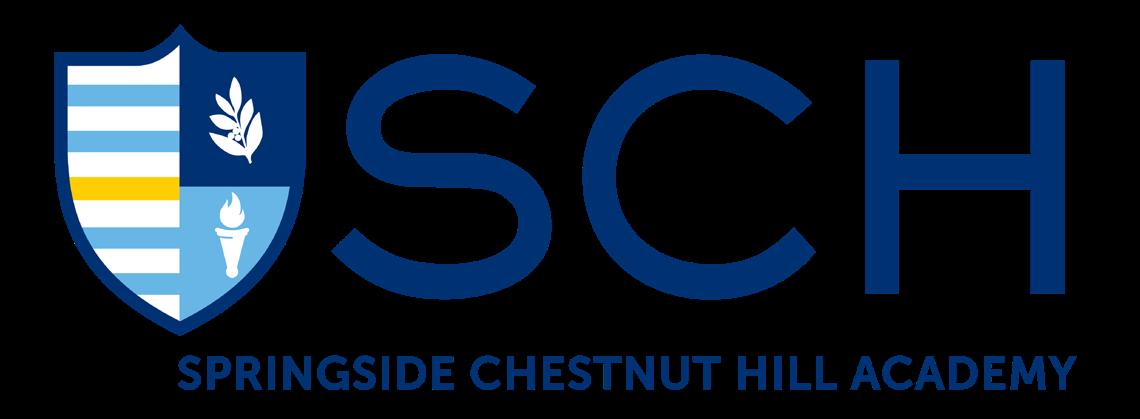CURRICULUM GUIDE

5th-8th Grade






The ability to read critically, to interpret figures of speech and characters’ motivations, to analyze narrative and poetic structures, to speak with conviction, to listen with empathy, and to write clearly and confidently are not only crucial to literature studies but also invaluable skills for understanding this everchanging global community. Our English program is skill based but also fosters a lifelong love of reading whose foundation is an investigative, curious spirit and a desire at every turn to respond with the student’s own observations, beliefs, and analysis. SCH students graduate with the critical-thinking tools, writing abilities, and questing spirit that will make them confident to face whatever the world places in their paths.
The Middle School English program reinforces and builds upon our students’ reading fluency and comprehension, develops their interpretive reading and analytical writing abilities, and expands their grammar and syntax mastery. The books we read are chosen for their literary quality, diversity of voices, and appeal to Middle School students. Common books between the boys’ and girls’ curriculum include classics such as A Midsummer Night’s Dream, Number the Stars, and The Giver. More contemporary tales offer students windows into other worlds and experiences, including texts such as A Long Walk to Water and I’ll Give You the Sun in the boys’ curriculum and Incantation and Brown Girl Dreaming in the girls’. Writing assignments embrace expository, poetic, narrative, and analytic writing forms. Our students leave Middle School as budding analytical thinkers, critical readers, and dynamic writers with the confidence and toolbox to help them thrive in Upper School English.
In 5th grade English, students across both divisions learn to become more effective readers, writers, and speakers and develop the ability to see things from different points of view. Because of the unique skills and perspectives all students bring to the classroom, students learn together how to enjoy literature and to see how books connect to their own lives. Students ask, “What can I learn from reading this book?” and “How can we best share our ideas with others?” Grammar and vocabulary study are integral course components.
In 6th grade English, students pursue the goals of thinking, writing, and speaking effectively and critically, reading with greater competency and enjoyment, becoming conversant with the terminology of literary analysis, understanding the different qualities of the literary genres, incorporating good grammar and a varied vocabulary into writing and speech, and taking intellectual risks. Essential questions pursued during the year include: “Why do we read and write literature?”; “What makes a work of literature ‘great?’”; and “What makes a place feel like home?”
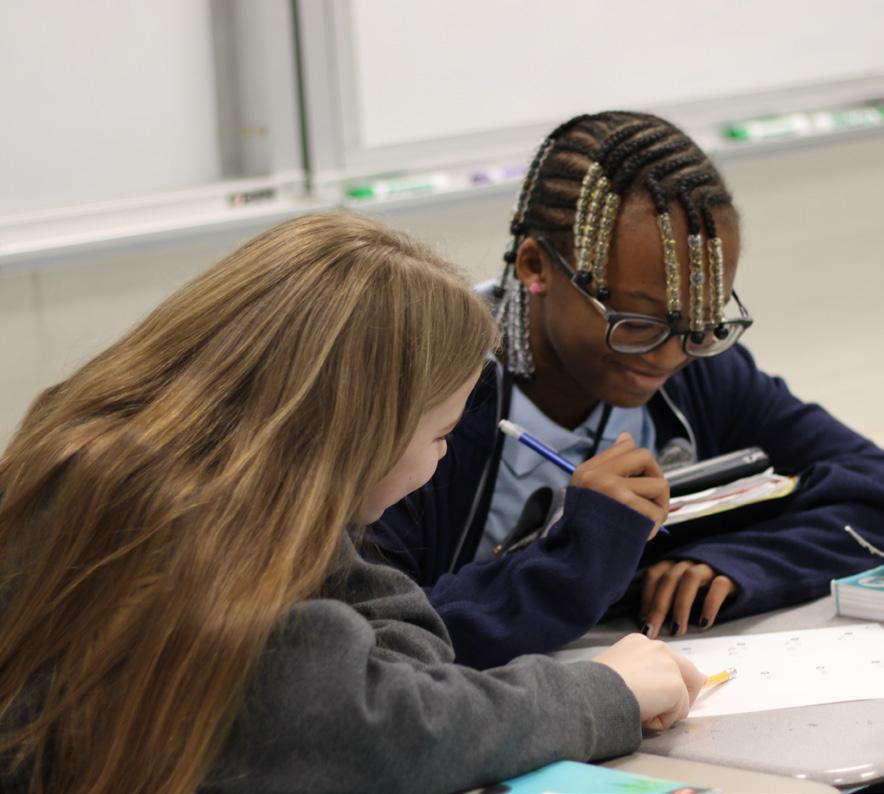
In 7th grade English, students continue to pursue the goals of their previous year but with greater depth and rigor. In addition to the questions of why we read and write literature and how and why authors create their stories, students will ask, “Who am I, and how do I show myself to the world?” Specifically, this class focuses on the various aspects that make up a person’s identity and how that identity affects our interactions with the world around us. Through historical and contemporary texts, students will trace the evolution of characters’ identities and how authors use language to communicate feelings and promote societal change.
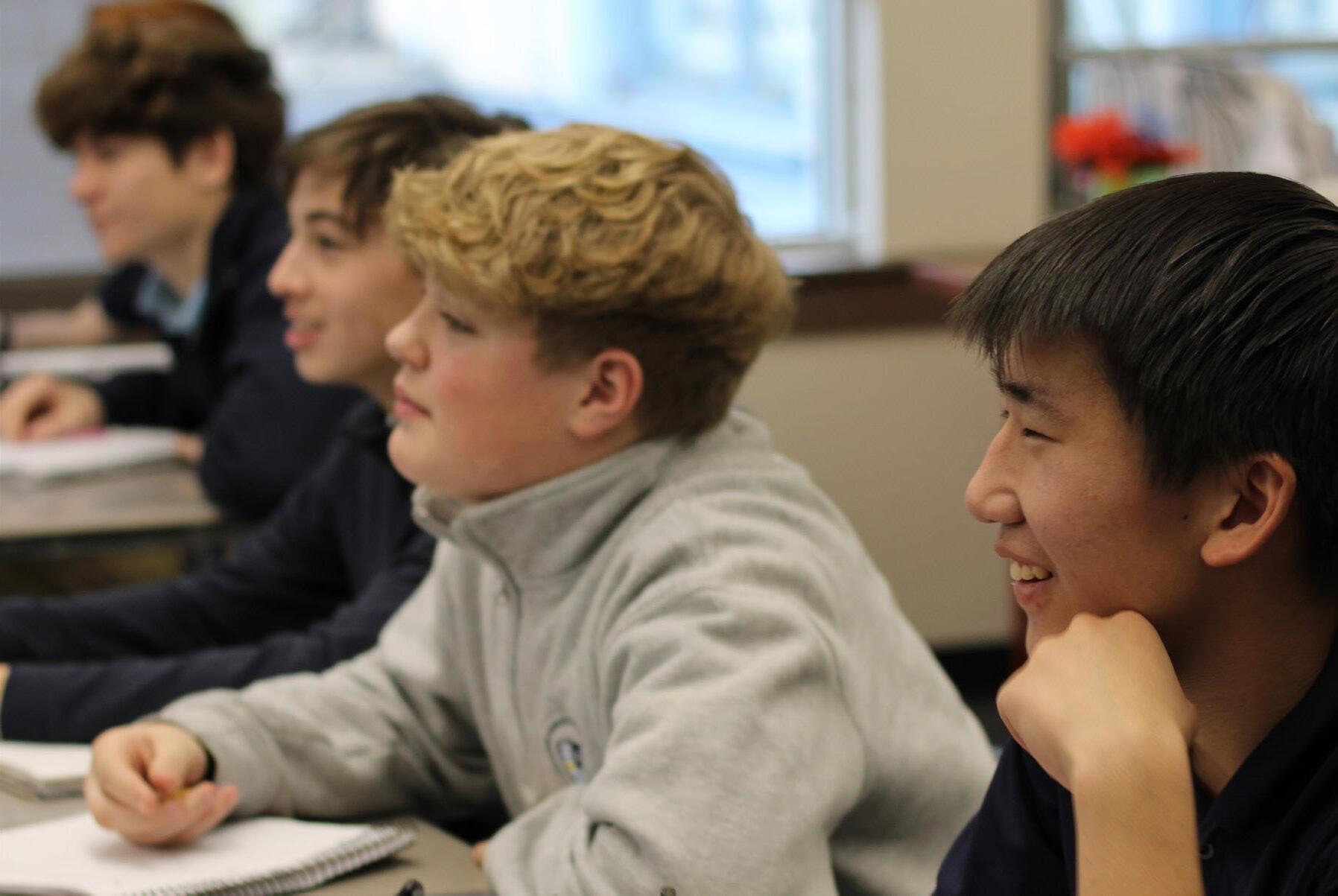
In 8th grade, students consider the themes of dreaming and the power of artistic expression in constructing self-identity. The characters encountered in this course are compelled by powerful social forces and must make bold choices about who they want to be in the world. Examining a wide range of literary forms—including memoirs, novels, lyrical poetry, short stories, and drama—students critically interrogate the ways authors explore class, race, gender, sexuality, family make-up, and other aspects of identity. They also get a chance to unpack these ideas creatively as writers in several literary forms. Throughout the year, much attention is paid to the historical context of each piece, how an author’s perspective is revealed by their use of language, and how divergent experiences conveyed through art can reveal a shared humanity that connects to our lives today.
In today’s dynamic global environment, a strong knowledge of history and the ability to think critically is an essential part of how and what we learn. Middle School students study history in inquiry-driven classrooms that promote experiential learning and develop historical empathy. Understanding the perspective of historical figures and their diverse experiences allows students to reflect upon their own lives to understand more fully the world and cultures that shape them.
In Middle School, the history curriculum is tailored to the passion, curiosity, imagination, and energy of our students. In 5th and 6th grades, students examine the geography and history of the ancient world, exploring themes with contemporary relevance. In 7th and 8th grades, they participate in a two-year study of American history using the resources of Philadelphia to engage in real-life, handson learning. Students deepen their ability to analyze and create a wide variety of traditional and digital technologies, write in many formats, and present and speak publicly.
Our curriculum emphasizes geography, reading, writing, and analysis. Studying history is not just memorizing information about the past; it is a way of thinking and learning. Students will apply and demonstrate knowledge and understanding through a variety of activities and assessments.
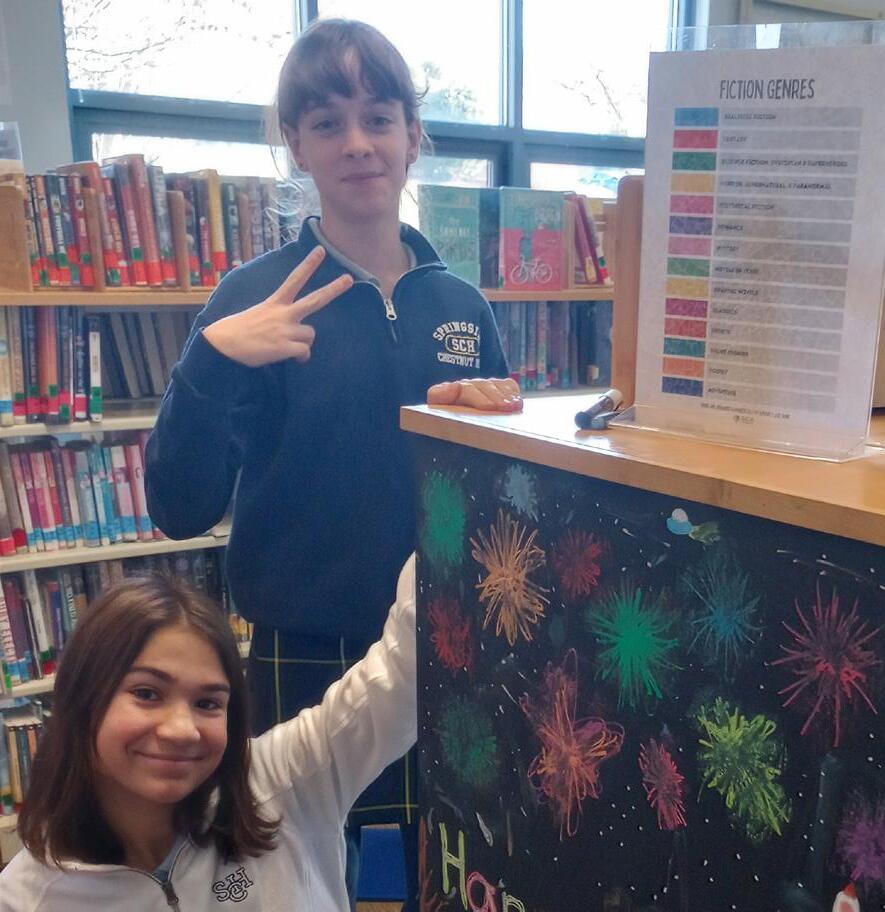
History in 5th grade begins with the dawn of human civilization. We travel through time and place to explore a wide variety of communities, and in doing so, students learn to see their own lives from a new perspective. Students in this class create, critique, and collaborate, as well as strengthen their reading, writing, study, and communication skills. We bring in a range of technologies to showcase what has been accomplished. This course kicks off with a study of geography, historical timelines, and prehistory. Then we explore the government, economy, religion, military, and society (GERMS) of Mesopotamia, ancient Egypt, ancient India, and ancient China. Analytical essay writing prompts and discussions of current events in these modern countries and cultures are interwoven into the units. Some overarching themes for this beginning year in the study of history are developing historical empathy, perspective taking, and open mindedness.
In 6th grade, students continue developing their analytical writing, communication, critical reading, note-taking, and study skills, while studying a variety of important civilizations throughout time. Using a blend of primary and secondary sources, students learn to inquire into, organize, and explain events that have happened. In the first unit on ancient Greece, we explore their beliefs, government, and lasting impacts on philosophy and culture. This is followed by a dive into ancient Rome,
where students learn about this empire’s leaders, as well as research Roman advances in engineering and science. The third unit is on Islam, providing the opportunity to learn about its rich religious history and scientific contributions, as well as study the architecture of famous mosques throughout the world. This unit is followed by a study of West Africa, exploring the fascinating empires of Ghana, Mali, and Songhai. The next unit delves into the Middle Ages, the Italian Renaissance, the Scientific Revolution, and the Age of Exploration. Finally students explore Mesoamerica, setting them up for the study of Native Americans in the beginning of 7th grade.
This class covers American history from the First Peoples through the Civil War. We’ll explore the social, political, and economic factors that shaped the foundations of the U.S., with a particular focus on the intersection of race, gender, and class. Students will consider
multiple narratives and diverse perspectives through a variety of primary and secondary source texts, documentaries, and images. We’ll also connect these stories to the present to better understand our country today.

This class looks at American history from 1865 to the present through multiple narratives. Just as varied as the voices we will study are the ways we study them. We will explore the ways people have experienced and contributed to our country. Race, gender, and class will be three of our lenses as we examine how power and injustice have shaped the U.S. We’ll also connect these stories to the present to better understand our country today. Students will consider multiple narratives and diverse perspectives through a variety of primary and secondary source texts, documentaries, and images.
The language program is shaped by two important beliefs: the first is that it is essential for our students, in an ever more interconnected world, to develop an awareness of and appreciation for cultures other than their own. The second is that they can accomplish this goal more thoroughly and meaningfully by competently communicating in their target language.
In 5th grade, students take Chinese.

In 6th grade, students may either continue Chinese or begin their journey in French or Spanish. In 7th grade, students can choose Latin as an option as well. Students entering the Middle School in 7th or 8th grade who do not have prior language exposure will be placed into Introduction to Language and will then have the opportunity to pursue a specific language in 9th grade. New 7th and 8th grade students who already have language exposure in French, Spanish, Latin, or Chinese have the opportunity to be placed into the respective language.
The science curriculum offers students in every grade challenging and exciting learning experiences that help them develop the skills of scientific inquiry and an understanding of the laws, systems, and structures that define our natural world. Classes provide students with opportunities to use the most up-todate equipment and technologies as they ask questions, design experiments, explore, collaborate, and become efficient and effective problem solvers.
Our interdisciplinary curriculum integrates engineering principles in meaningful and relevant ways and asks students to quantify their work using appropriate mathematical and statistical tools and to use the arts and new media to model their work or creatively and richly display what they have synthesized.
Teachers are guided by the Next Generation Science Standards, PA Science Standards, the National Science Teachers’ Association, and local curricular materials. In addition, all divisions make extensive use of the surrounding Wissahickon ecosystem, as well as the school’s work in sustainability, as part of our dynamic, real-world curriculum.
Our project-based approach to learning challenges students to design their own investigations by forming hypotheses, investigating in the lab or field, quantifying and analyzing data, and drawing conclusions. These projects involve them in meaningful, openended, inquiry-based problem solving from designing and constructing solar-powered cars, to engineering earthquake-resistant towers. In 7th and 8th grades, students have an opportunity to gain greater exposure for their research projects by entering outside competitions such as the Christopher
Columbus Awards and the Junior Solar Sprint at the Franklin Institute. Through these experiences they strengthen their scientific skills and begin to think of themselves as scientists and engineers.
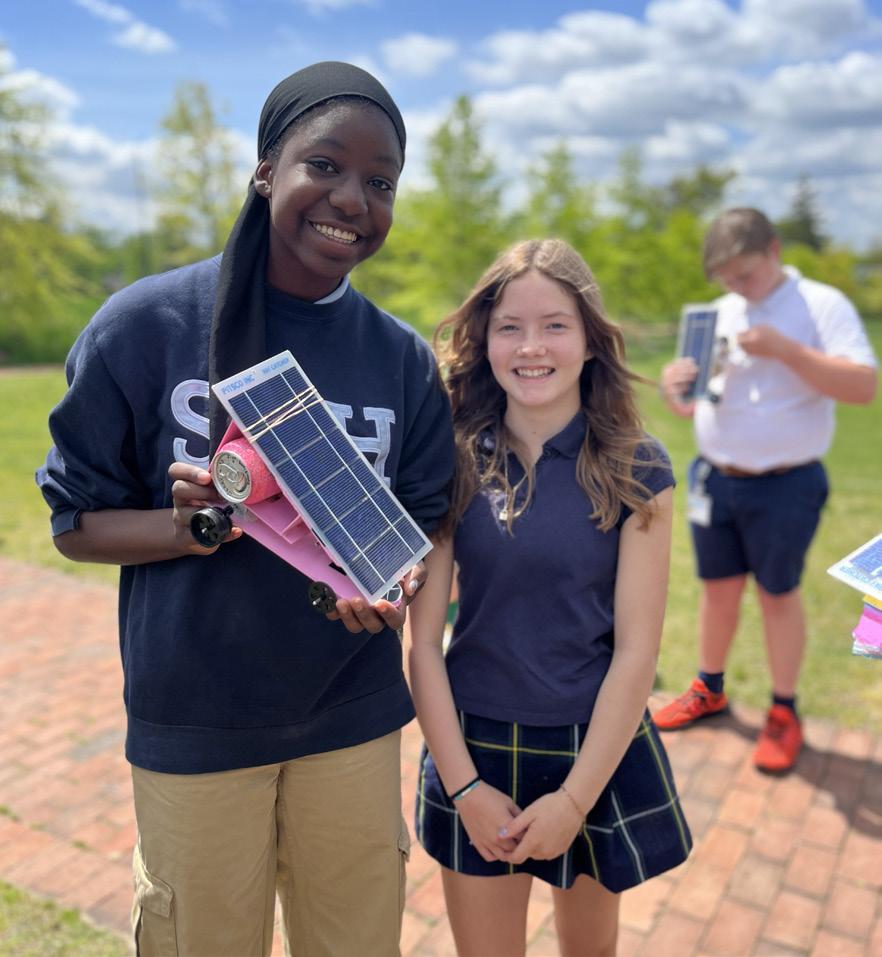
In 5th grade science, students explore the relationships between the basic sciences of chemistry, physics, and biology. During the ecology unit, students investigate the world around them and improve their problemsolving abilities. Highlights include conducting fieldwork in the Wissahickon to study seasonal changes, culminating in a behavioral study of insects where they learn the process of experimental design as part of the scientific method. During their water chemistry unit, students conduct lab investigations that explore pH and solubility and explore drinking water and wastewater treatment processes. During their introduction to Newtonian physics, students conduct investigations to learn about Newton’s second law. They use their knowledge of physics principles to design and build miniature golf course holes that they
try out with Lower School students. The class focuses not only on science content and skills but also on helping with overall studentship skills and science reading literacy.
In 6th grade earth sciences, students learn the basic concepts of astronomy, meteorology, oceanography, and geology through handson activities, experiments, demonstrations, and individual and class projects. During our astronomy unit, students design and build a model space probe capable of extraterrestrial exploration. During our meteorology unit, students use weather data to forecast each day’s weather. Geology topics include minerals and the rock cycle, earthquakes (including the design and construction of earthquake resistant towers), and volcanoes (including a Google earth-based analysis of the “ring of fire”). Hikes around the school and in the surrounding Wissahickon enhance students’ knowledge of the area’s rich geological history. Other highlights of the course include an evening star party presented by Astronomy to Go.
In this course, 7th graders study the characteristics that unify living things. They begin by investigating cells, the basic units of life, and explore the interconnectedness and uniqueness of organisms by looking at adaptations, how species have changed over time, and how living things are influenced by the environment. They also investigate genes, chromosomes, and DNA, and use Punnett squares to investigate genetic inheritance. They extract DNA and use gel electrophoresis to separate and analyze DNA fragments. With this foundation in cell biology, genetics, and evolution, the 7th graders go on to study human anatomy and physiology. Several biophysics units highlight the interdisciplinary nature of science. For example, when
studying the eye, students conduct optics investigations to understand the physics of light waves. Similarly, the unit on the ear and hearing integrates labs involving the physics of sound waves. Highlights include an original team experimental research project, in which students address a local concern related to the immune system, health, and disease transmission, then design and investigate a solution to the problem and present their work to their peers.
This course provides students with a basic understanding of the properties of matter, the various types of energy and their uses, and the effects of energy use on their own lives and on the environment. Students learn to explain and quantify everyday phenomena in terms of the scientific principles learned in class. They design their own experiments in order to solve a variety of problems, many of which are open ended, allowing individual creativity to shape their solutions. When studying heat, the 8th graders design and build their own model energy-efficient house. Other topics covered include atomic theory, home heating, and electronic circuit design. Students also participate in an extended interdisciplinary unit involving solar car design and construction

that concludes with participation in the SCH Solar Sprint competition. At the end of the year, the 8th graders learn about alternative energy sources, including researching and designing infographics related to the “story of energy use.”
The mathematics program at SCH aims to develop students’ problem-solving skills and logical thinking. At all ages, this is accomplished by applying standard skills and concepts to real-life applications as much as possible. We want our students to be willing and eager to tackle a new problem, regardless of the problem’s challenge or ease.
Middle School math emphasizes process over results as it exposes students to the fundamentals of algebraic thinking. While reinforcing basic arithmetic skills with fractions, decimals, and percents, in 5th grade we use variables in mathematical expressions and equations, culminating in 8th grade with formal algebra and the solving of systems of equations as well as quadratic equations. We emphasize multistep problems to teach the importance of doing work on paper rather than in your head. Algebraic thinking is taught in the context of real-world problems which helps students grasp the relevance of what they are learning. Middle School students gain confidence and expertise in tackling multistep problems and translating words into mathematical expressions while learning good processes along the way.
Our 5th grade math is all about strengthening and solidifying students’ number sense and problem-solving skills. Students engage with, and grow their understanding of, whole numbers, fractions, decimals, percents, place
value, and the operations that relate them to one another. We push students to reach procedural fluency while strengthening their conceptual understanding of these numbers and relationships via visual representations. This is a key emphasis of our Math in Focus curriculum. We also grow students’ adaptive reasoning and strategic competence abilities by asking them to analyze, to strategize, and to solve real-world problems and situations involving these kinds of numbers, operations, and relationships.
Our 6th grade math course builds upon the number sense and relationships solidified during 5th grade. We take what students can do with whole numbers, fractions, decimals, and percents, and begin to include new kinds of numbers and operations such as integers, ratios, divisibility, factors, multiples, and proportions. We also push students toward fluency in simplifying larger, longer, more complex numerical expressions, and towards using their current math knowledge within the realm of descriptive statistics, basic probability, and important tools/themes of geometry. We ask students to work with data sets of nonwhole numbers, to compute percentages and probabilities for real-world decision making, and to apply proportional reasoning to similar geometric figures. Overarching learned skills are mathematical communication, organizing mathematical work, making a problem-solving plan, and transferring their skills to non-routine problems.
Unlike in 5th and 6th grade math, in 7th grade students begin to use their knowledge of operational relationships to work with known and unknown quantities. They do so by writing and solving simple equations and inequalities. Real-world applications and percent change
are re-examined from an algebra perspective. Students are asked to analyze, model, and solve such problems via algebraic expressions and solving multistep equations. We extend this application of algebra while circling back to 6th grade geometry skills. Students re-explore angle and line relationships from an algebra perspective, and then work with triangle, quadrilateral, polygon, circle, and area/volume properties in the same way. It is within this algebraic study of geometry that students are introduced to linear functions and the ability to graph within a coordinate plane.
The goals for students in 8th grade math are:
1) to complete a typical Algebra I course, and
2) to prepare for Upper School Geometry and Algebra II. During this year, we take their knowledge of algebraic expressions and linear equations and extend it to include twovariable equations, exponent properties, and
solving multistep linear inequalities. While more graphing is done with linear functions, we graph linear inequalities while discussing inclusion/exclusion of values for a solution. It is also during this year that we begin to introduce non-linear algebraic relationships, such as polynomial and radical functions. It is within the learning of these topics that we loop back and draw upon students’ 6th grade understanding of exponents and factors to support their ability to work with exponents of variables and with factoring algebraic expressions. Throughout this year, in preparation for transition to the Upper School, we expect and foster students’ self-advocacy and self-reflection skills while preparing them to work with multiple representations of algebra and with solving non-routine problems.
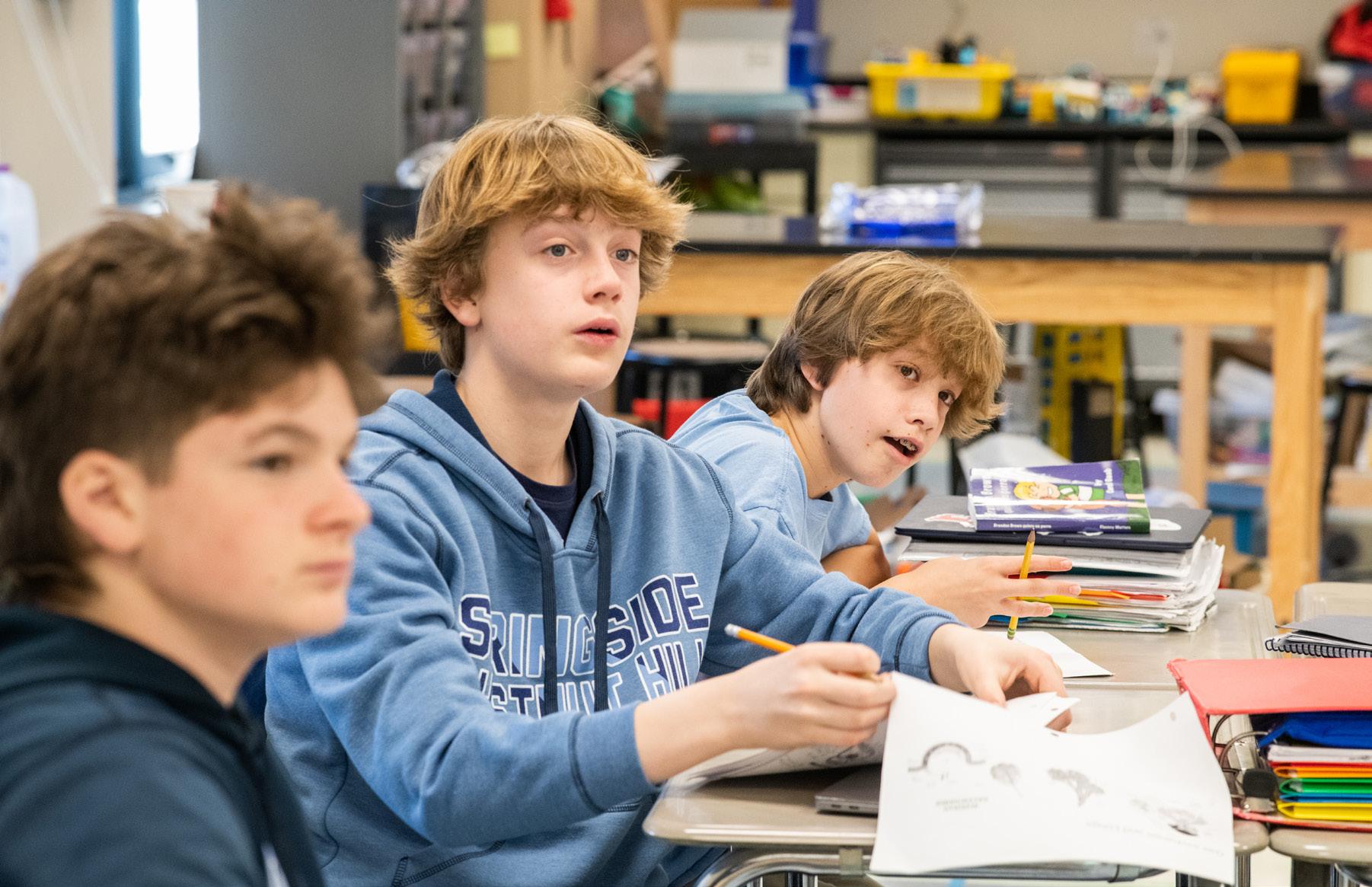
Fueled by the passions of our students, SCH Academy’s Arts and New Media Programs provide an extensive and ever-growing list of creative opportunities throughout all divisions. Beginning with Pre-K, students are taught skills woven around artistic principles, concepts, and habits that grow in complexity from year to year.
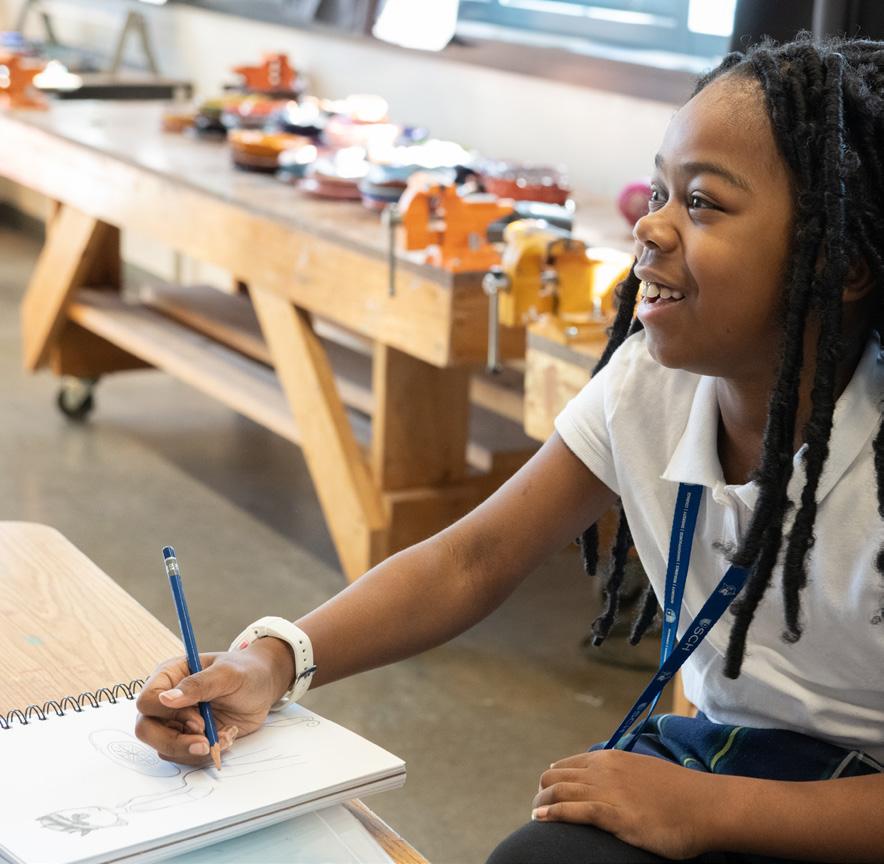
From our collegiate-level ceramics facility to our VidCast and Jamie Bell Recording Studio, we seek to enable our students to follow their interests without boundaries and extend their creative abilities into the newest dimensions of arts expression. SCH’s faculty of active artists seek to encourage the creative, conceptual, and technical growth of the individual artist. Students are able to flourish within a community of creators with opportunities to embark on a specialized study or explore a more global study of the arts.
To best set up our students for future success, SCH’s new media curriculum consistently looks towards progressive, emerging technologies. These courses and afterschool programs include video production, music production, creative coding, design and fabrication, 3D design, interactive design, design and fabrication, photography, animation, and more.
The Visual Arts program encourages students to think creatively while providing them with the instruction necessary for individual selfexpression and artistic exploration. With the opportunity to be immersed in a wide variety of media, students are emboldened to be creative and inventive thinkers. The studio classroom is focused on individual and collaborative
projects, which are assessed through ongoing discussion and critiques. This process helps our students draw upon the different aspects of themselves as they grow into more accomplished and self-assured artists. Assessment centers around the process of making art and the maintaining of an ePortfolio to share self-evaluations and critiques. The Visual Arts Program celebrates students’ works by displaying them year-round on the walls of the Middle School.
The progression of drawing and painting is fundamental to the Middle School art program and plays a crucial role in cognitive development. Students learn to think creatively, develop hand/eye coordination, refine skills, and conceptualize ideas. Drawing and painting facilitates students’ creative process by learning to see, describing what is seen, and perfecting ideas and concepts. As a means for students to express themselves, whether it be through portraying something accurately, clarifying a thought, such as making a social commentary, or crystallizing an idea, drawing and painting is a perfect venue.
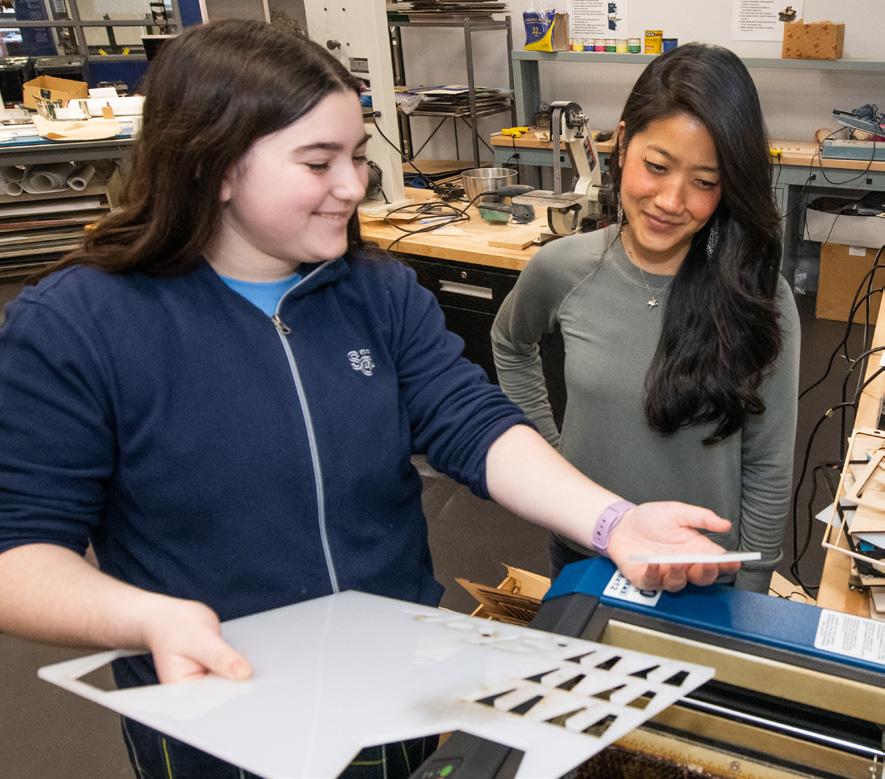

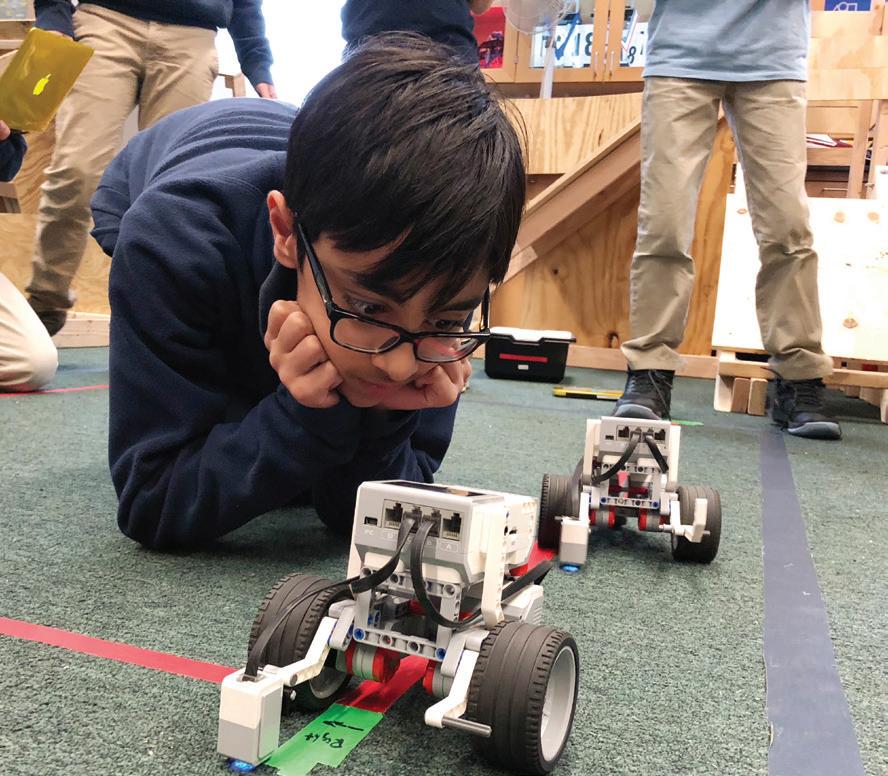
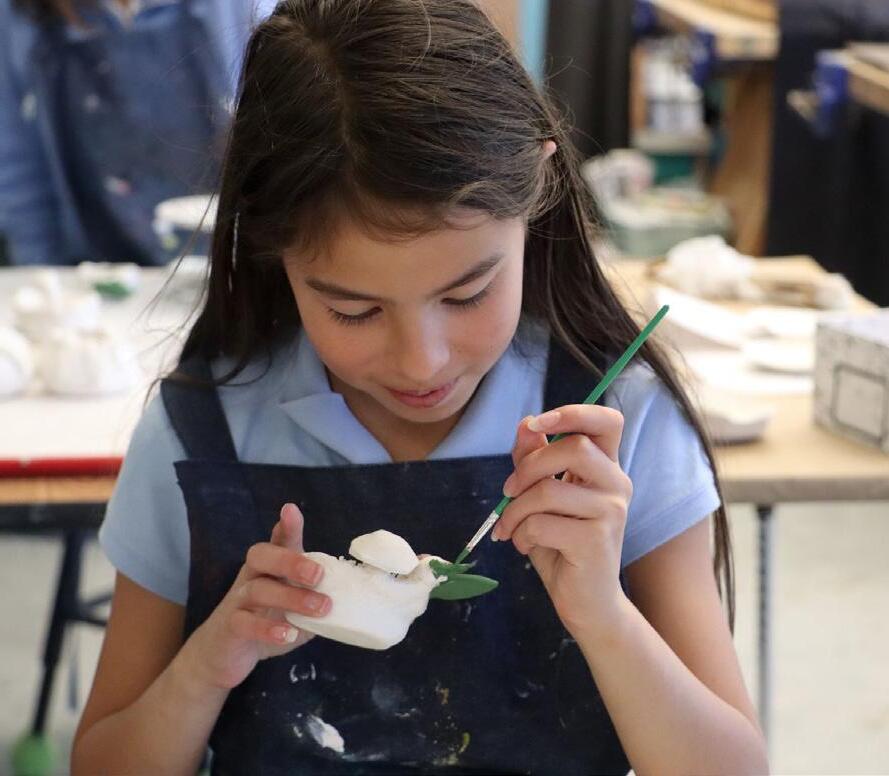
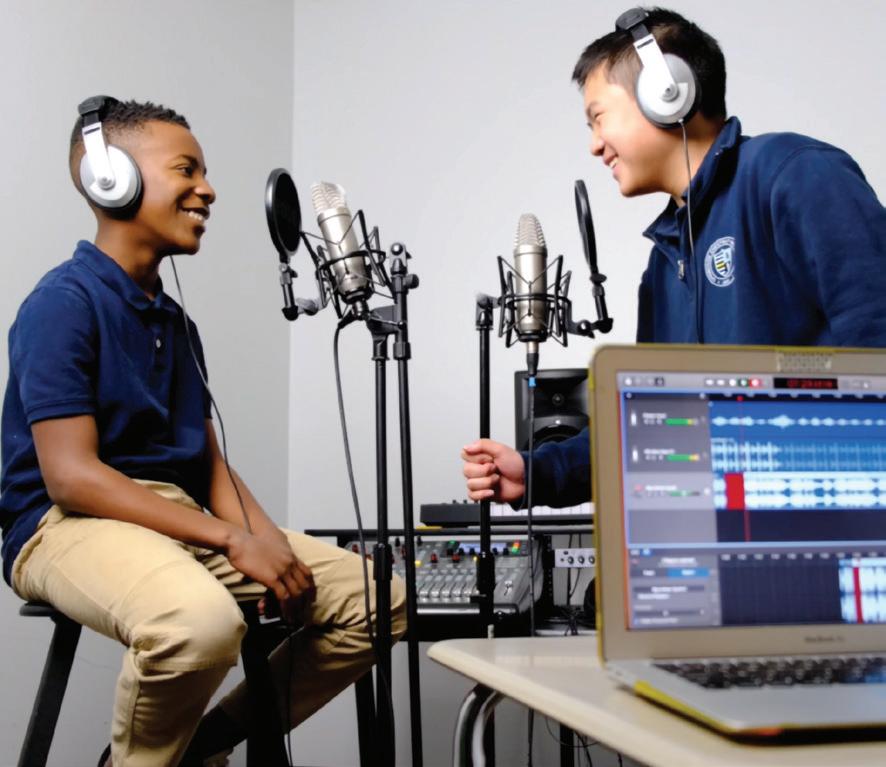
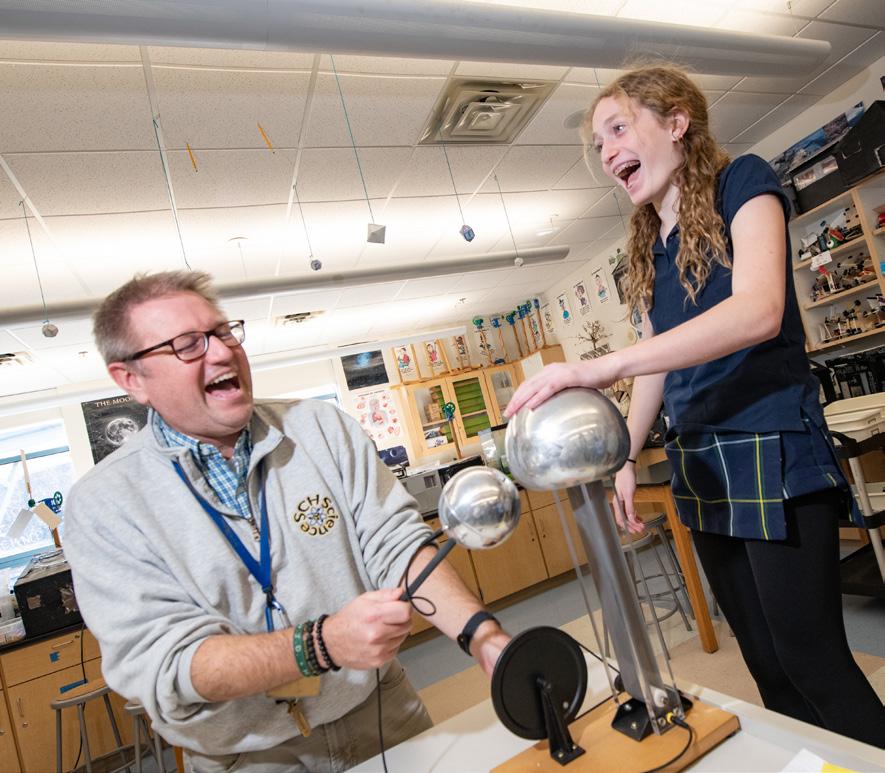
The creation of three-dimensional art through molding, casting, carving, and construction is essential in the understanding of space and form. It fulfills the human desire to transform materials into three-dimensional forms to express ideas. Lessons in sculpting help students to develop observational skills, expand imagination, master techniques, and visualize space with detail and accuracy. In the process, students learn to manipulate the materials while gaining awareness of the physical world around them.
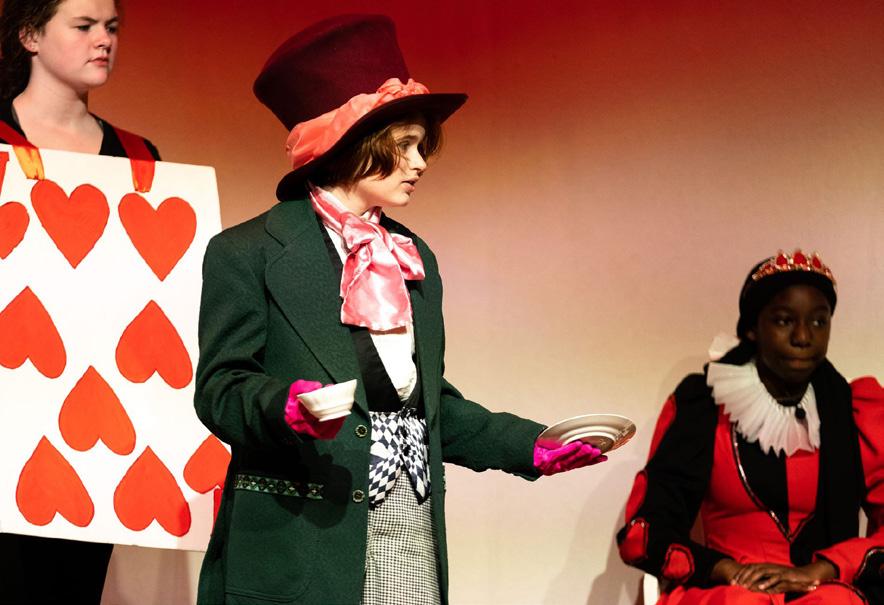
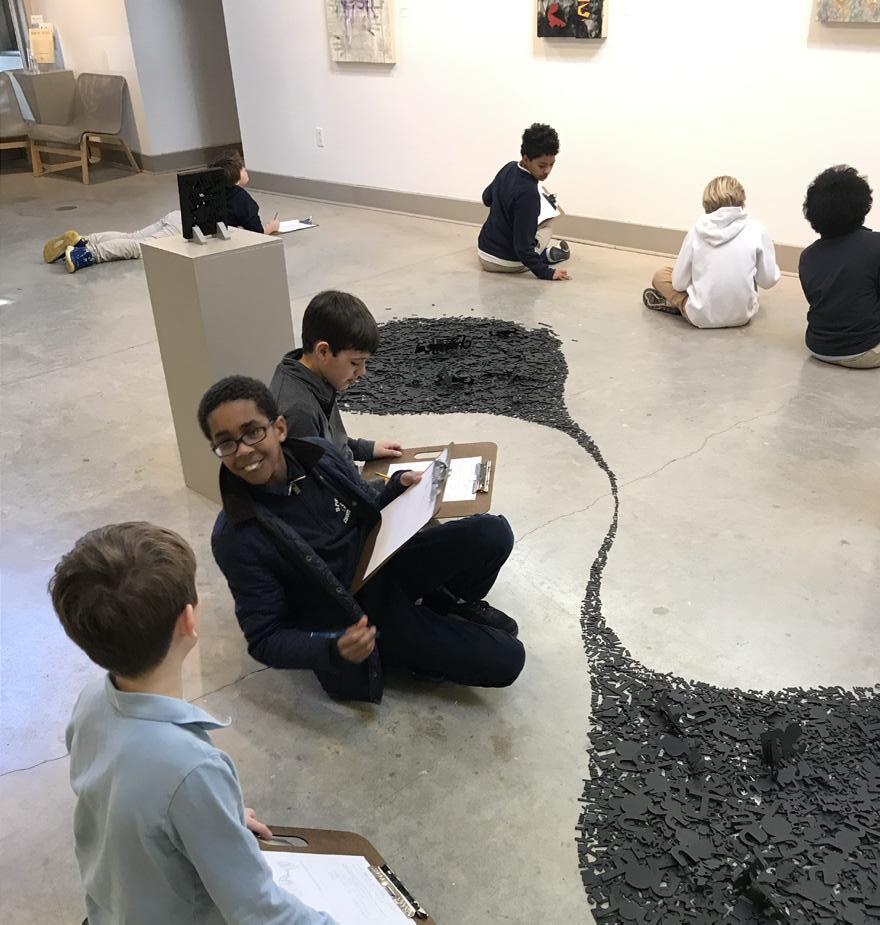
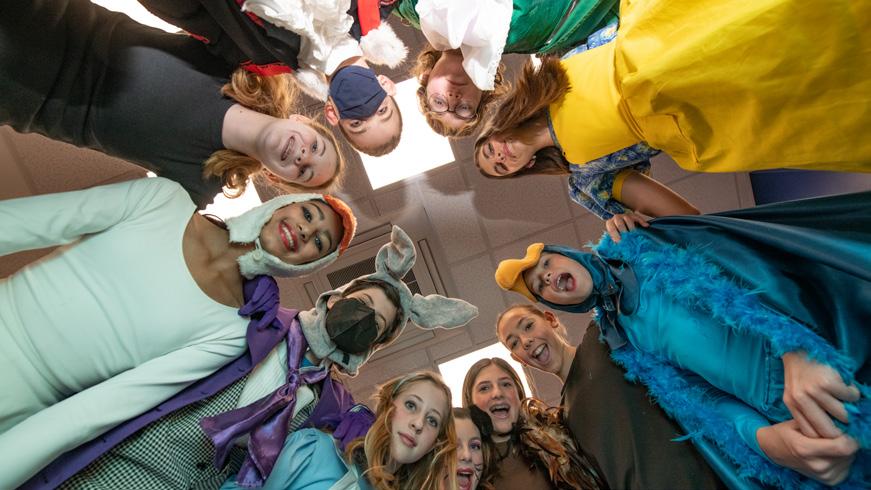
SCH’s Barbara Crawford Gallery is a unique space that encourages self-discovery through externally curated exhibitions as well as student and faculty art shows. The curated exhibits are selected to inspire and encourage dialogue among the community through the displayed works and educational programs built around each exhibit. Through the use of the Crawford Gallery as well as the neighboring Wissahickon and local museums, students learn to make connections to the world around them.
New Media skills are essential for all students since they provide a gateway to digital creation. It is for that reason that new media courses are represented in the CEL curriculum in the Middle School as a way for students to be introduced to digital skills. These skills include creative coding, design and fabrication, interactive technologies, communications and design. New media courses continue through the CEL Capstone project in 10th grade. After Capstone, students may elect to pursue larger projects in classes in Creative Coding, Architecture, Digital Design, 3D animation, Video, and Gaming as an arts elective in the Upper School. The newly renovated VidCast & Jamie Bell Recording Studio on the Middle School campus features a production room with green screens, a recording studio, and two teaching spaces with desktop computers running professional-level video and music software.
Formal performing arts education begins in Middle School when students in 6th, 7th, and 8th grade elect to participate in Middle School drama—one of their first coed activities. They may participate either as actors or stage crew (including set design, props, costumes, lighting, sound, publicity, and more). Students may also apply for leadership positions as a stage manager or technical director. In this experience our Middle School students develop a well-rounded foundation for theater, focusing on collaborative scene-building, script analysis and character development, acting techniques, improvisation, and technical design. Past productions include Frozen Jr., James and the Giant Peach, and Beauty and the Beast.
Music is a universal language that promotes communication and collaboration among all who share in the experience. Our offerings include choirs, instrumental ensembles, or Music Explorations. Each of these classes is designed to develop music literacy, listening skills, and dexterity in the language of music. Individual growth is varied, and students maintain an ePortfolio so they can reflect on their own musical journey through Middle School. The ensembles perform two times during the school year. Guest artists are invited to campus each year to enhance musical learning. Recent guest artists include blues singer Shemekia Copeland, double bassist Xavier Foley, and Grammy-award-winning composer Dennis Matkosky.
The instrumental music program, presents a progression of Band and String Orchestra Ensembles that cater to the individual skill levels of each of its string, woodwind, brass, and percussion members. Student understanding deepens through the inclusion of music theory, composition, and music history. Ensemble participation develops skills through the performance of music from a variety of genres, styles, and cultures. The 7th and 8th Grade Band and String Ensemble work both individually and collectively as Orchestra students to form their first full orchestral experience. In addition to strengthening their ensemble skills, this full orchestra experience prepares students for their participation in the Upper School Orchestra. Each ensemble performs twice during the school year.
The Middle School choral progression offers continued development of collaboration and a variety of musicianship skills. Students develop vocal technique, ear training, and sight-singing

ability through exploration and performance of unison through multi-part choral literature drawing from a variety of styles, genres, and cultures. Choirs in the Middle School for Boys combine to form a 5th-8th grade MSB Choir, while choirs in the Middle School for Girls perform in their respective grade-level ensembles. The choirs perform twice during the school year.

The Music Explorations Program at SCH offers a unique hands-on study of music through varied curricula. It is designed to enrich students’ understanding of musical form and expression as they delve into music composition and world music studies. Explorations in Creating Music analyzes elements of rhythm, melody, and form while learning the basics of producing and recording music. In addition to original compositions, studies also focus on song arranging using notation and sequencing
software. Explorations in World Music examines diverse global musical traditions and cultures. Students look to the structure of music to understand how it is representative of each culture. They expand on this learning by playing in various world music ensembles such as an Afro-Cuban Percussion Ensemble, West African Drumming Ensemble, Ukulele Ensemble, and ensembles composed of self-made percussion instruments such as the shekere and cajon.
The music program at SCH sponsors an after-school private lesson program enabling students to study with master teachers in a wide variety of instruments as well as voice. Students are encouraged to participate in recitals to showcase their learning. In order for students to become accustomed to performing in front of an audience, students perform in studio classes arranged by the studio instructor in the fall. In the spring, students participate in formal recitals.
The Center for Entrepreneurial Leadership (CEL) is committed to developing an entrepreneurial mindset and skillset in every student at SCH. While CEL extends to students Pre-K–12th grade, CEL in Middle School focuses on courses from Digital Storytelling-Audio to Money Matters to Intro to Coding. The CEL program prioritizes the development of four key traits that comprise the entrepreneurial mindset: opportunity seeking, creative problem solving, resiliency, and resourcefulness. These traits are woven throughout students’ CEL curricular experience.
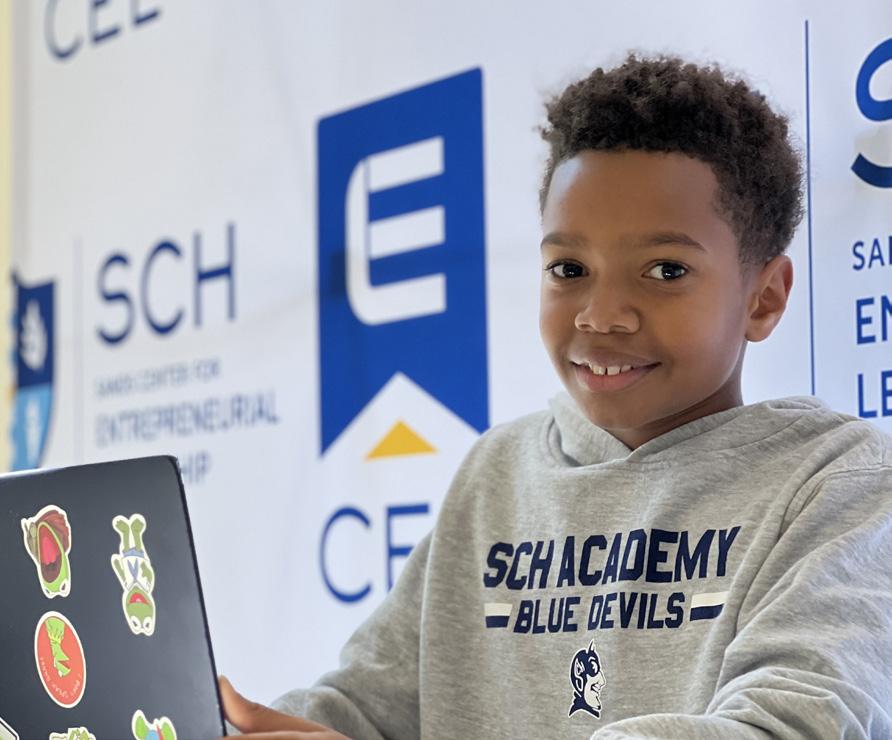
Through character design, pixel art, coding and controller fabrication, students create original video games that address a change they’d like to see in the world. Students explore the design process through new media technologies and build confidence in their ability as a maker.
Teamwork and Collaboration hones a variety of skills that will prove valuable to our 5th graders in all entrepreneurial work at SCH and beyond. Students explore their entrepreneurial identity with a focused study on skills such as creative problem solving, communication, compromise, time management, and collective effort in both team building challenges as well as larger projects.
This course is an introduction to voice and sound as a method of self expression and storytelling, along with the basics of audio recording and editing. As a class students
explore their vocal toolbox, leveraging it as they record an audio drama. Students are also introduced to sound effects and manipulating sound as tools to communicate emotion within a story and hone their ability to bring stories to life through what a listener hears.
This course introduces students to video production and continues to build on their communication skills as they focus on using visual means to tell stories. Students develop skills in brainstorming, storyboarding, camera usage, and video editing as they create personal promo videos that showcase their passions and personalities.
Always thinking of new inventions, fixing things or wanting to help come up with new solutions to real world problems? Become an elite member of the Invention Squad! Working together, students will apply engineering design skills to each step of the design process. Throughout each project students will define a problem and success criteria, make different prototypes, establish systematic testing procedures, and analyze data to improve solutions.
SCH Academy provides a holistic overview of these topics, and the students quickly embark on a research project of their own. Each is assigned a different SDG (a United Nations sustainable development goal), which they research and present to the class. Each student also reflects on which SDG is most important to them at this juncture in their lives, and how they might act on it day to day.
This course is designed to motivate students to learn computer science to improve real world relationships, connections, and life. Students learn about coding using Apple’s Swift Playgrounds in n engaging game-based environment.
Throughout this class, students use engineering design principles and processes to create sustainable features and infrastructure of a future city. Using tools like computer automated design (CAD), 3D printer, laser cutters and more students develop research, collaboration, and problem solving skills to tackle some of the world’s biggest problems.
This course serves as a gateway to help students be confident and engaging presenters, through developing their own short TED-style talk, focused on something they consider to be an idea worth spreading. Through these presentations rooted in their passions, students explore and expand their skills in effective communication, slide creation and design, body language, analyzing presentations, and public speaking.
Approximately 45 unique voices per trimester come together to express their thoughts, opinions, and ideas in one, cohesive magazine. In 8th grade Digital Publishing, students collectively ideate, organize, design, and publish a digital magazine. In the process, they learn about the rights and responsibilities of content creators; research and write about topics of interest to them; and flex their design muscles.
In this class, students analyze existing toys and learn how to design, prototype, and market their own! Using a wide variety of new media tools, each student creates a one of a kind action figure that comes equipped with 3D printed accessories, packaging designed in Adobe Illustrator, and a vacuum formed blister pack.
In this finance-focused CEL course, students dream up, develop, and pitch their own unique business idea. Students also develop their own personal budget, engage in economic simulation challenges, and practice investment and money management strategies.
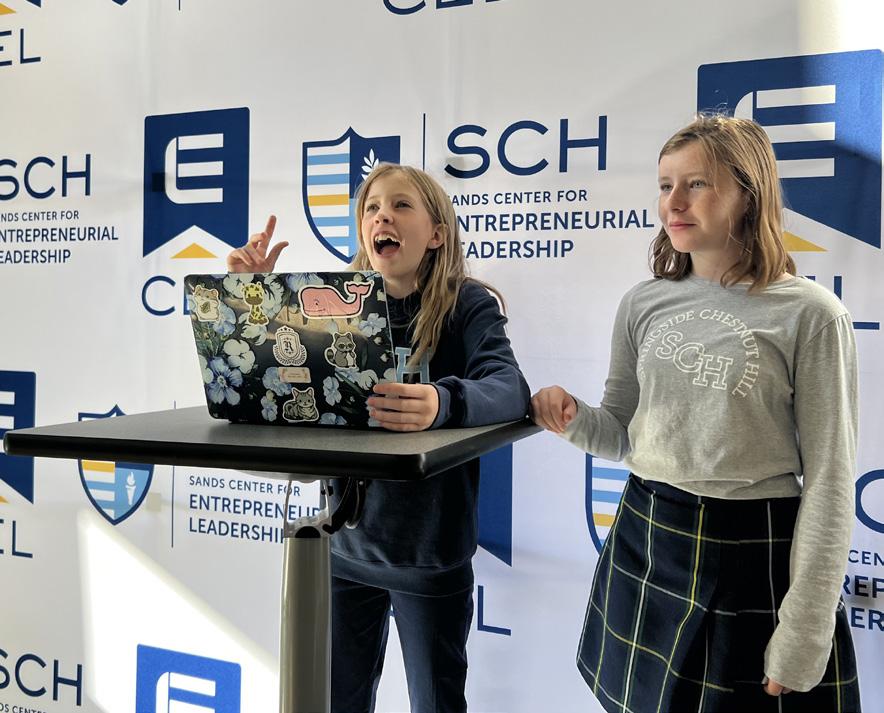
Students have many opportunities to explore their passions in Middle School. Through an elective period, they choose from approximately 15 different activities, ultimately participating in 12 over the course of their Middle School experience. Recent offerings have included Stop-Gap Animation, Student Council, Wallyball, Cooking, Improvisational Theatre, Independent Science Experimentation, Community Service, Student Newspaper, Theatre Technicians, Chess, Hiking, Debate Club, Book Club, Service on Campus, Chinese Calligraphy and Origami, and Drawing from Nature.
One of the highlights of Middle School is our unique AEIOU curriculum, which advances SCH’s mission to create an inclusive community. AEIOU stands for Awareness, Empathy, Inclusion, Opportunity through differences, and Understanding. As a community, we care deeply about celebrating diversity in all its forms and recognize how important it is in today’s world to be able to consider perspectives other than our own. Students engage in regular advisory and classroom lessons that enable them to explore myriad backgrounds, values, identities, and perspectives in order to build empathy and awareness. The dialogue and personal growth that result are powerful.
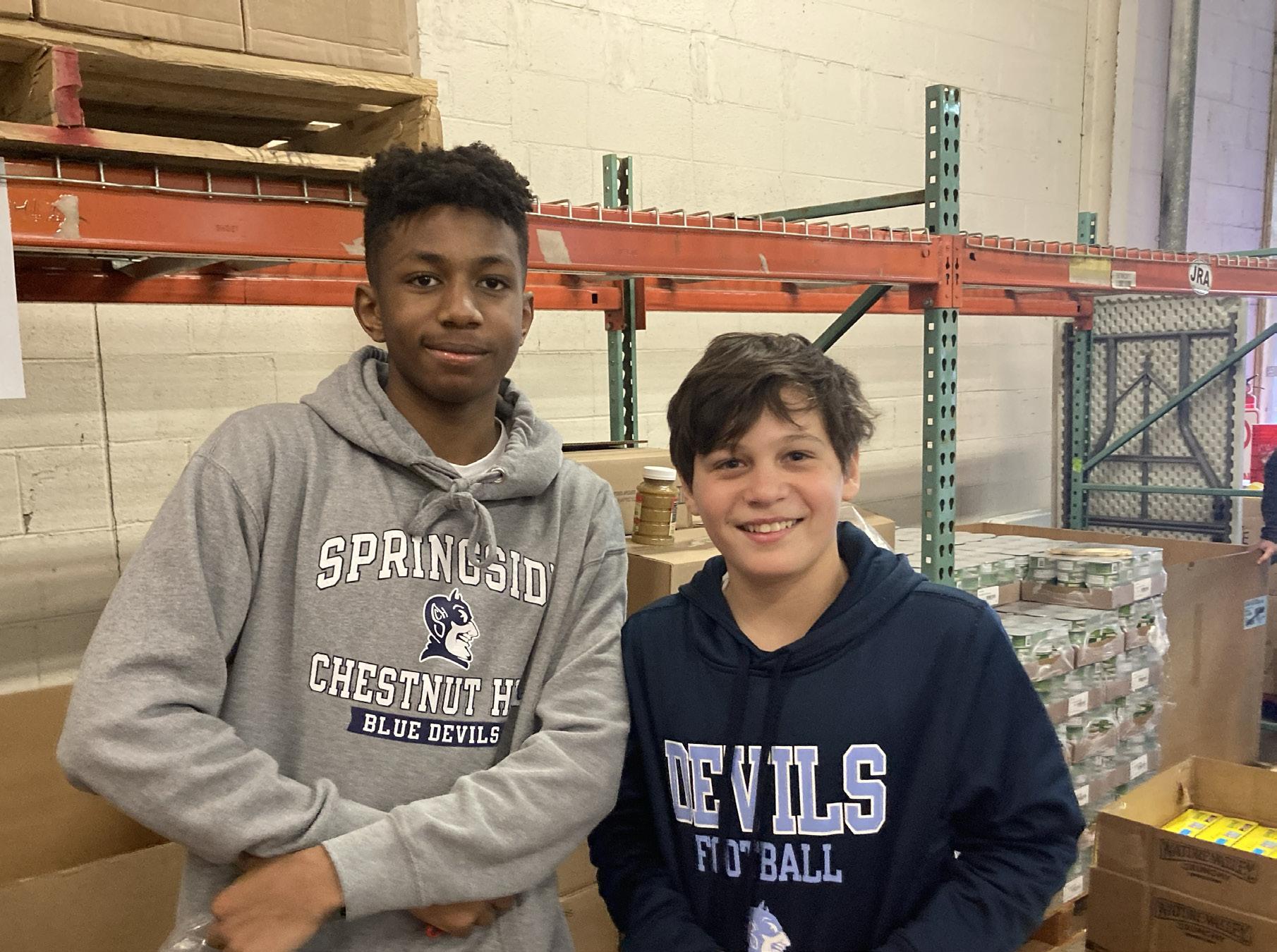
The Middle School health program is designed to develop health-literate students. The curriculum teaches students how to access, understand, appraise, apply, and advocate for health information and services in order to maintain or enhance one’s own health and the health of others as defined by SHAPE America. An emphasis is placed on the importance of making healthy decisions that will lead to a higher quality of life.
Students learn about important topics related to healthy living and emotional wellness. Topics include nutrition, exercise, strategies for mindfulness and stress reduction, anatomy, puberty, human reproduction, sexual education, and drug education. In separate classes for boys and girls, students feel comfortable asking the necessary and important questions that shape them into healthy, caring adults. All Middle School teachers and staff are a resource when it comes to physical and emotional well-being for our students.
5th grade PE is designed to develop physically literate individuals. Students will learn to move with competence and confidence in a wide variety of physical activities. The skills learned will educate students about ways to improve their quality of life through the lifelong, health-enhancing physical activity. Students will continue to develop sport-specific skills, strategy, game concepts and problem solving in preparation for the Middle School athletic program.
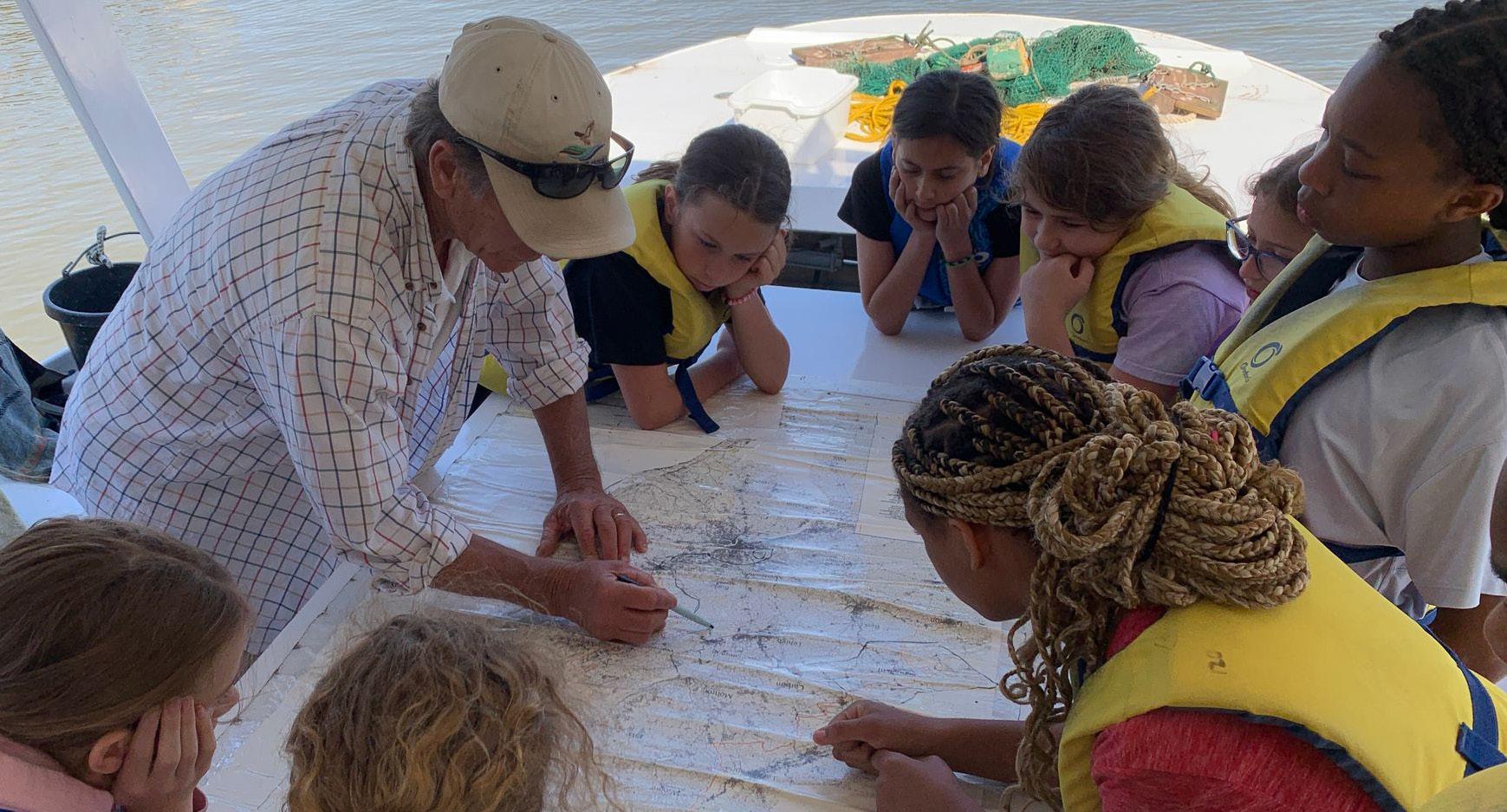
Middle School students at SCH can compete as part of two FIRST Robotics programs. Students in grades 5-6 can participate in FIRST LEGO League (FLL). FLL students engage in research, problem solving, coding, and engineering–building and programming a LEGO robot to navigate the missions of a robot game. As part of FLL Challenge, teams also participate in a research project to identify and solve a relevant real-world problem.
In 7th and 8th grade students participate in the FIRST Tech Challenge (FTC). FTC students are challenged to design, build, program, and operate robots to compete in a head-to-head challenge in an alliance format. Guided by adult coaches and mentors, students develop STEM skills and practice engineering principles, while realizing the value of hard work, innovation, and working as a team.
Middle School teams meet twice a week for about two hours from September through December. Students can earn a sports credit for participating in the robotics after school programs.
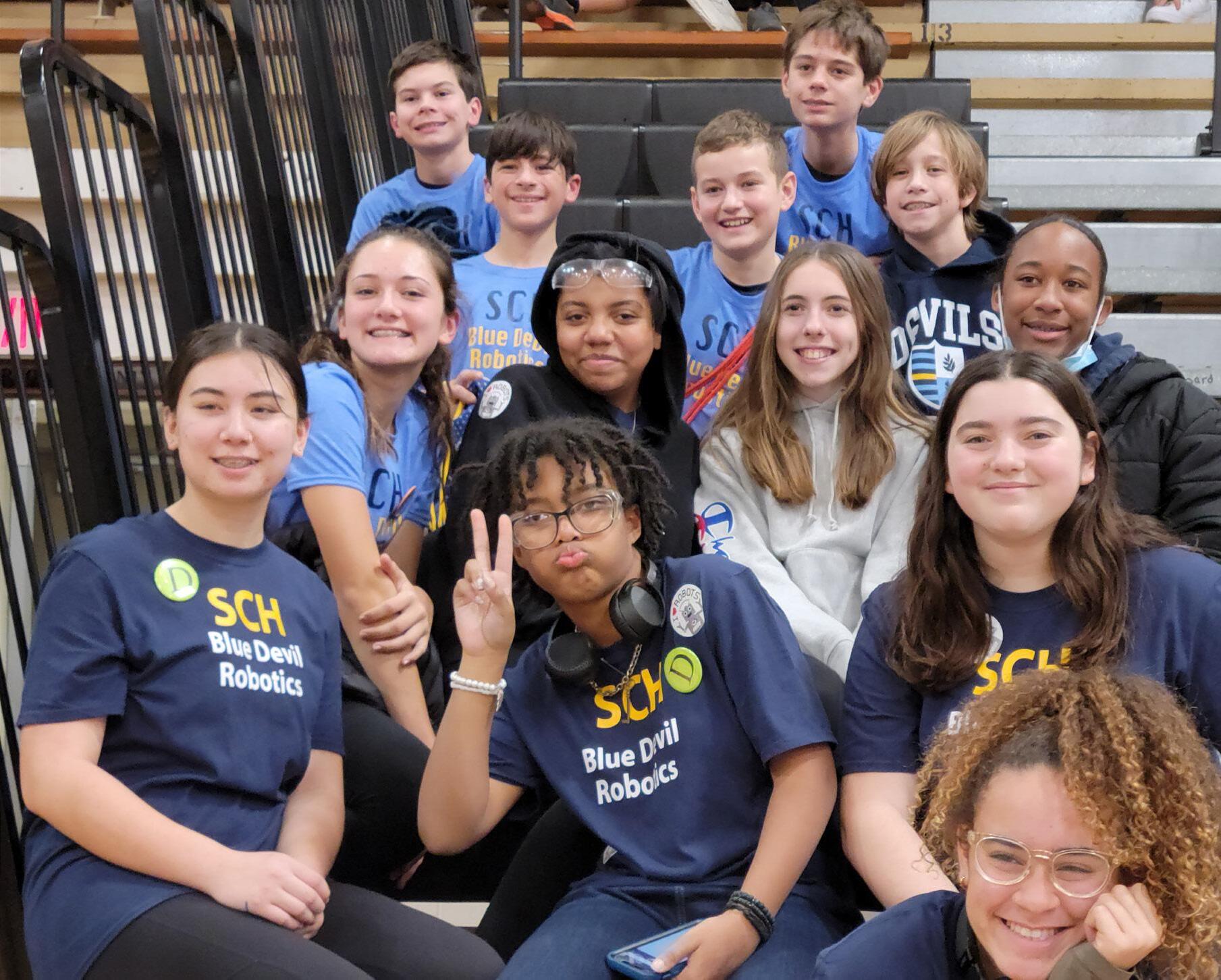
Athletics are an important part of the total learning experience at SCH. We embrace, encourage, and teach all that is good about sport. We stress teamwork, sportsmanship, personal commitment, a striving for excellence, and how to win and lose with class and dignity. Knowing that participation in athletics improves students’ self-confidence and overall health, our coaching staff is committed to fostering each student-athlete’s confidence, decision-making skills, sense of responsibility, and leadership skills—qualities that will serve them well throughout life. The department seeks to provide each student with a sense of affiliation, motivation, and accomplishment by balancing challenge and demand with support and encouragement. We hope that, by taking advantage of the many positive experiences that sports have to offer, all participants will enjoy their time on the playing fields and courts and will take with them memories that will last a lifetime. By encouraging broad participation in sports, the Athletic Department also seeks to generate a sense of pride within the student body, the faculty, and the larger school community for its teams and the overall school.
All students in grades 6th-8th are expected to participate in two out of three of the following seasons on an athletic team, or one sport and robotics or drama.
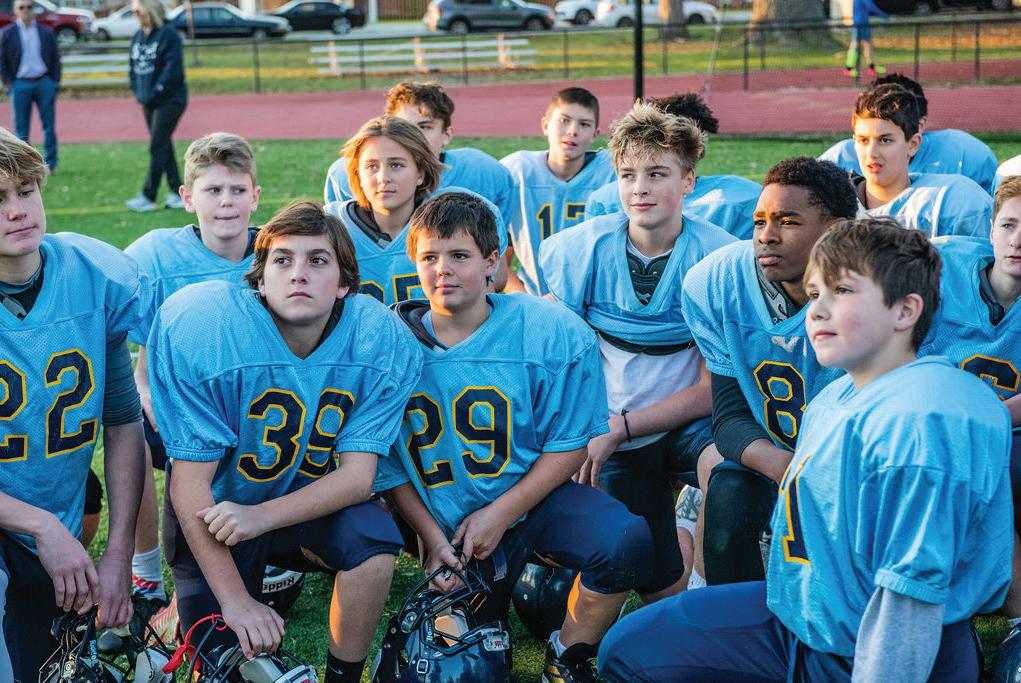
Fall Winter Spring Cross Country (B/G) Basketball (B/G) Baseball (B)
Field Hockey (G)
Fitness (G)* Golf (G)
Football (B) Intro to Crew (B/G)* Lacrosse (B/G)
Golf (B) Lifetime Sports (G)* Outdoor Track (B/G)
Soccer (B/G) Ice Hockey (B/G) Softball (G)

Tennis (G) Squash (B/G) Tennis (B)
Volleyball (G) Wrestling (B/G)
 Friendship surpasses team rivalry in the annual girls’ color war competition called Blue & Gold Day.
Friendship surpasses team rivalry in the annual girls’ color war competition called Blue & Gold Day.
